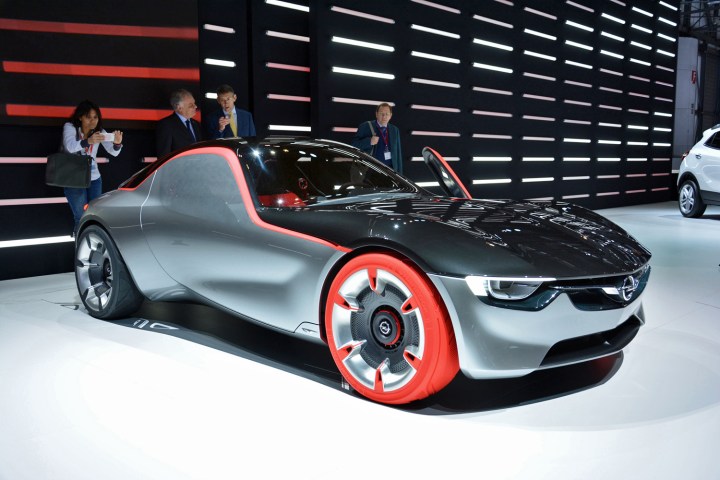
It’s difficult for the German brand to make a sound business case for a modern-day GT because the rear-wheel drive coupe segment is steadily declining all around the globe. Still, Opel explains the design study was too popular to remain a mere concept. Executives are consequently looking at cost-effective ways to put the coupe on the fast track to production.
Opel boss Karl-Thomas Neumann told British magazine Autocar there are two ways to create a rear-wheel drive GT. The first is to take an existing platform and make extensive tweaks to it; the second is to develop a brand-new platform from scratch. His comments suggest building the GT on the same front-wheel drive architecture as the new Astra has been ruled out.
Neumann hinted modifying an existing platform — such as the one that underpins the Chevrolet Camaro — requires too much work. Designing a new platform solely for the GT has also been ruled out, but there’s a catch. Industry rumors indicate Opel could split the cost of designing a rear-wheel drive architecture with another automaker. Autocar reports a potential partner is China-based SAIC, the brand that owns MG, but Opel has refused to comment on the rumors. SAIC would presumably use the platform for a new sports car inspired by the iconic MG B.
The GT concept has a shelf life of roughly two years, according to Neumann. The company has until 2018 to decide whether moving forward with the project makes sense. If it’s approved for production, the modern-day GT will arrive in showrooms across Europe before the end of the decade. As of writing it’s unclear whether the coupe will take on the second generation of the Toyota 86 on our shores.
Editors' Recommendations
- Support for dual GPUs could be making an unexpected comeback
- Could wooden windmills make a comeback? Sweden’s newest turbine shuns steel
- Zeppelins could make a comeback with this solar-powered airship cargo mover



